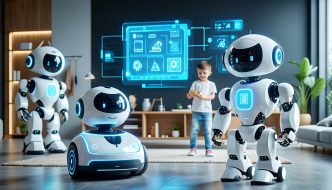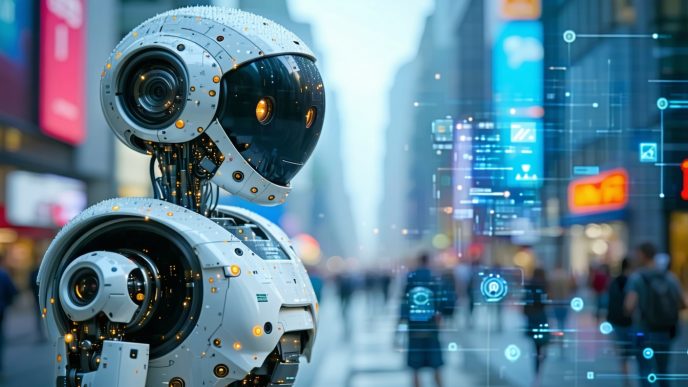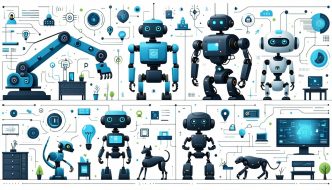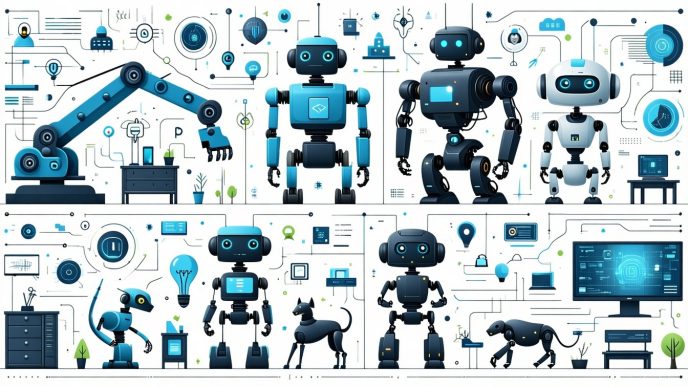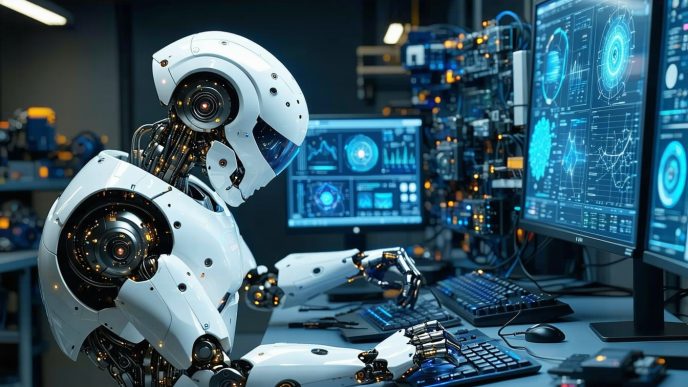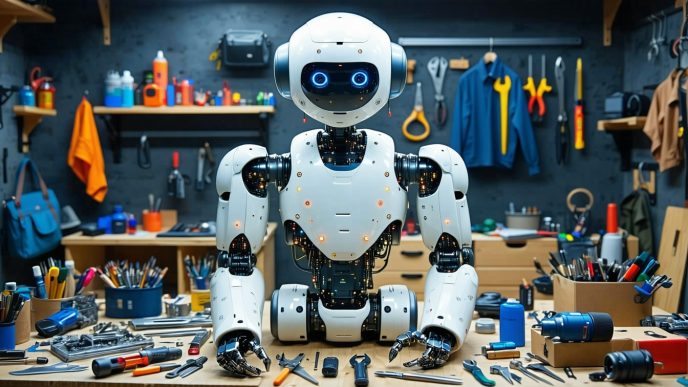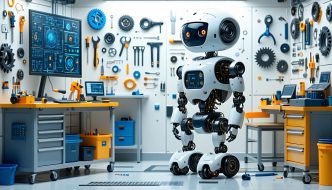Introduction to Humanoid Robots
Definition of Humanoid Robots
Humanoid robots are machines designed to resemble the human form in appearance and behavior. They possess features such as a head, torso, arms, and legs, which allow them to interact in human-like ways. These robots can perform various tasks, ranging from simple movements to complex interactions. Their design focuses on human-like motion and functionalities, making them more relatable for users.
Importance of Personalization in Robotics
Personalization plays a crucial role in enhancing the usability and user experience of humanoid robots. By enabling users to customize aspects of the robot, such as voice, appearance, and behavior, these machines can cater to individual preferences and needs. This not only increases user satisfaction but also allows robots to perform their roles more effectively. Customization is fundamental when considering the question, will we be able to customize our home robots.
Significance of Customization in Home Robots
The significance of customization becomes even more pronounced in the context of home robots. As these robots are integrated into daily living environments, their ability to adapt to the unique preferences and requirements of each household is vital. Customizing home robots can include setting household routines, adjusting their appearance, and programming responses based on user interactions. Such personalization enhances the relatability and effectiveness of robots in home settings.
| Aspect of Customization | Description | Example |
|---|---|---|
| Appearance | Adjusting physical features to meet user preferences | Changing color or accessories |
| Behavior | Modifying interaction styles based on user’s needs | Setting the tone of voice or responsiveness |
| Functions | Tailoring capabilities to fit household tasks | Programming specific chores like cleaning or cooking |
Through personalization, home robots can become valuable companions, helping to enrich daily life while performing essential tasks. The future of humanoid robotics holds much promise in this realm, paving the way for increasingly customized solutions. For more on these advancements and their implications, explore articles on humanoid robots for home use and humanoid robot customization.
Current State of Personalization
As the field of humanoid robotics continues to evolve, personalization remains a key area of interest. Understanding the existing customization features and recognizing the limitations present in today’s technology provides insight into the future of home robots.
Existing Customization Features
Many current humanoid robots incorporate a variety of features designed to enhance user experience. Customization typically includes aspects like voice options, appearance adjustments, and functionality settings. Below is a summary of some common features:
| Feature | Description |
|---|---|
| Voice Options | Users can select different voice types or languages for interaction. |
| Appearance Adjustments | Certain robots allow for visual personalization, including color change or interchangeable parts. |
| Functional Settings | Adjustments can be made to tasks a robot performs, such as cooking, cleaning, or companionship. |
| User Interaction Modes | Robots can switch between casual and formal interaction styles based on the environment. |
Such features allow users to tailor their robots to better fit their individual needs and preferences, leading to the question: will we be able to customize our home robots?
Limitations in Personalization
Despite advancements, there remain several limitations to personalization in humanoid robotics. The current generation of robots often struggles with:
| Limitation | Explanation |
|---|---|
| Limited Range of Customization | Many robots offer only basic features, lacking in-depth customization options. |
| Compatibility Issues | Personalization features may not work seamlessly across different robot models. |
| User-Centered Design Challenges | Developing intuitive customization interfaces for all users can be complicated. |
| Privacy and Data Concerns | Collecting user preferences for personalization can raise privacy issues. |
These limitations highlight the need for ongoing research and development to improve personalization capabilities in humanoid robots. Understanding these aspects may pave the way for future innovations in areas such as humanoid robot customization and user experience enhancement.
Advancements in Humanoid Robotics
The field of humanoid robotics is rapidly evolving, driven by significant technological innovations and advancements. These developments are shaping the landscape of personalized home robots, raising the question: will we be able to customize our home robots?
Technological Innovations
Recent advancements in technology have introduced new capabilities for humanoid robots. These innovations include improved sensors, enhanced processing power, and sophisticated materials that contribute to the functionality and appearance of robots.
| Technology Type | Key Features |
|---|---|
| Sensor Technology | Advanced sensors allow robots to perceive their environments accurately. They can detect obstacles, identify individuals, and respond to voice commands. |
| Processing Power | Higher computational capabilities enable robots to process data quickly, which is essential for real-time decision-making. |
| Material Science | Lightweight and resilient materials improve the mobility and durability of robots while allowing for detailed designs. |
These innovations contribute to a growing number of applications for humanoid robots, from healthcare to home assistance. For specific examples of modern humanoid robots, consider exploring models like the Apptronik Apollo and the Xiaomi CyberOne.
Impact of Artificial Intelligence
Artificial Intelligence (AI) plays a crucial role in making humanoid robots more adaptive and responsive. Machine learning algorithms help robots to learn from their interactions and develop personalized responses based on user preferences.
The integration of AI capabilities allows for:
- Voice Recognition: Robots can understand and process spoken commands, making interactions more intuitive. For more on this, see our article on voice interfaces in humanoid robots.
- Emotion Recognition: Advanced AI can help robots interpret human emotions, enabling them to engage in more meaningful interactions. More details on this can be found in our piece on emotion recognition in robots.
- Behavior Adaptation: AI enables robots to adapt their behaviors based on user feedback, enhancing the personalization aspect significantly.
The potential for AI integration opens up various possibilities for future humanoid robots, increasing the likelihood of customized solutions tailored to individual users.
Development of Personalized Interactions
Personalized interactions are becoming a hallmark of next-generation humanoid robots. As developers focus on creating robots that resonate with their users, customization features are now being integrated into the design process.
Personalized interactions include:
- Customized User Profiles: Users can create profiles that adjust the robot’s language, behavior, and preferences.
- Adaptive Learning: Robots learn from user interactions, fine-tuning their responses over time.
- Feedback Systems: Mechanisms that allow users to provide feedback on their interactions, helping the robot enhance its capabilities.
The development of these features not only aims to improve user experience but also addresses the growing demand for home robots that can adapt to various lifestyles. For an in-depth look at how customization is evolving in this field, refer to our article on humanoid robot customization.
As advancements in technology, AI, and personalized interactions continue to progress, it is only a matter of time before consumers can fully customize their home robots to suit their individual needs and preferences.
Challenges to Customization
As the advancement of humanoid robots progresses, customization becomes a crucial element for enhancing user experience. However, there are significant challenges associated with personalization, particularly concerning privacy and security, as well as ethical implications.
Privacy and Security Concerns
The ability to customize humanoid robots introduces various privacy and security challenges. Personalized robots often require the collection and analysis of sensitive data, such as personal preferences, behavioral patterns, and potentially even biometric data. This leads to concerns about how this information is stored, used, and shared.
Data breaches pose a significant risk, as malicious actors could exploit vulnerabilities to gain access to personal information. Ensuring robust security measures is essential to maintain user trust. A survey conducted among potential users highlighted key concerns regarding privacy and security:
| Concern | Percentage of Respondents (%) |
|---|---|
| Data Breaches | 68 |
| Unauthorized Access | 65 |
| Misuse of Data | 70 |
| Lack of Transparency | 60 |
Developers must prioritize building secure systems that adhere to privacy regulations. Innovations, such as data encryption and user-controlled data management, are becoming necessary features in the realm of humanoid robotics.
Ethical Considerations in Robot Personalization
The customization of humanoid robots brings ethical considerations to the forefront. As robots acquire personalized characteristics and abilities, questions arise about the implications of these features. For instance, the development of emotional recognition capabilities in robots necessitates understanding the effects on human-robot interactions.
There are concerns regarding the potential for manipulation, where robots could be programmed to elicit specific emotional responses from users. The balance between enhancing user experience and maintaining ethical boundaries is crucial. Additionally, the development of robot personalities raises questions about self-awareness and autonomy in robots. A breakdown of ethical concerns is provided below:
| Ethical Concern | Description |
|---|---|
| Manipulation | Risk of exploiting user emotions through personalized interactions. |
| Autonomy | Discussions around whether personalized robots should have self-awareness. |
| Dependency | Potential over-reliance on robots for companionship and emotional support. |
| Societal Impact | Effects of human-like robots on social relationships and dynamics. |
As the field of humanoid robotics evolves, careful consideration of privacy, security, and ethical implications will be vital in steering future developments. Addressing these challenges can pave the way for greater acceptance and integration of personalized home robots, ultimately exploring the question of will we be able to customize our home robots.
Future Possibilities for Home Robots
As technology continues to evolve, the future of home robots promises increased personalization. The ability to customize these humanoid robots will enhance user experience and improve their functionality.
Predictions for Customization
Future advancements in technology are expected to enable deeper levels of customization in home robots. Predictions indicate that users will increasingly be able to tailor their robots to meet their specific needs and preferences.
| Customization Feature | Predicted Availability Year |
|---|---|
| Voice and Language Options | 2025 |
| Personality Profiles | 2026 |
| Adaptive Learning Capabilities | 2027 |
| Customized Task Performance | 2028 |
These features will allow users to choose everything from the robot’s voice to how it interacts within the home environment. The development of humanoid robot customization technology will play a crucial role in realizing these predictions.
Potential Benefits of Personalized Home Robots
Personalized home robots will bring several advantages that cater to individual user needs. Some potential benefits include:
- Improved Usability: Robots that adapt to the specific needs of users will be easier and more intuitive to use.
- Enhanced Efficiency: Custom robots can automate tasks in a way that aligns with the household’s routines, leading to better time management.
- Stronger Emotional Connections: Users may find it easier to bond with robots that reflect their individual preferences and personalities, resulting in enhanced companionship.
- Better Health Monitoring: Personalized features can allow robots to assist with health tracking, making them valuable companions in humanoid robots in healthcare.
Integration of Personalized Features
The integration of customization capabilities into home robots will involve advanced software and hardware systems. These systems will allow for seamless updates and improvements based on user feedback and behaviors.
Key areas of integration include:
- User Interface: A straightforward interface will allow users to modify settings and preferences easily.
- Machine Learning: Robots will utilize machine learning algorithms to adapt to user behavior over time, improving their performance.
- Sensory Inputs: Enhanced sensors will enable robots to better understand and respond to user needs, increasing their effectiveness.
As seen with instances like the Xiaomi CyberOne and Tesla Optimus, these capabilities are paving the path toward more interactive and personalized home robots. As advancements continue, the question remains: will we be able to customize our home robots to an even greater extent?
Consumer Adoption and Feedback
The adoption of humanoid robots in homes faces numerous factors, including consumer expectations and feedback mechanisms. Understanding these aspects can provide insight into how individuals perceive the potential for future customization.
Consumer Expectations
Consumers have specific expectations regarding the capabilities and performance of humanoid robots. They envision robots that can be tailored to meet their unique needs, preferences, and lifestyles. Key expectations include:
| Expectation | Description |
|---|---|
| Versatile Functionality | Consumers desire robots that can handle various tasks, from cleaning to companionship. |
| Easy Customization | Users expect intuitive processes for personalizing their robots, including software updates and features. |
| Emotional Intelligence | There is a significant demand for robots to recognize and respond to human emotions, enhancing interactions. |
| Safety and Security | Consumers prioritize safety features, ensuring that robots can operate without causing harm. |
| Affordability | A reasonable price point is vital for widespread adoption, making customization accessible to a broader audience. |
These expectations indicate that consumers are not just looking for functional robots, but for companions that integrate into their daily lives and adapt to their individual preferences. Discussions about whether we will be able to customize our home robots often center on these factors.
Feedback Mechanisms for Customized Robots
Collecting feedback from users is essential for improving humanoid robots. Feedback mechanisms can vary and include the following methods:
| Mechanism | Description |
|---|---|
| Surveys and Questionnaires | These tools gather structured feedback on user experience, features desired, and overall satisfaction. |
| Usage Analytics | Data collected from robots can provide insights into how consumers interact with their robots, helping developers identify areas for improvement. |
| Social Media and Online Reviews | Platforms where users share their experiences can influence perceptions and expectations of robot customization. |
| Focus Groups | Discussions with groups of users can offer deeper insights into user needs and desires for customization features. |
Implementing effective feedback mechanisms ensures that developers can understand consumer needs and address any shortcomings in current models. As humanoid robots evolve, the importance of aligning product development with user expectations will only increase, driving improvements in features and customization capabilities. Insights from consumer feedback play a crucial role in shaping the future of humanoid robotics.

